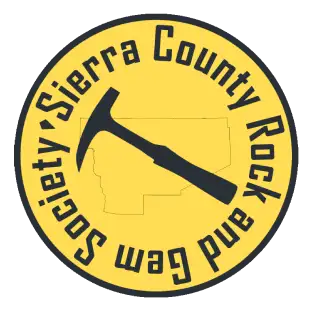Membership Library
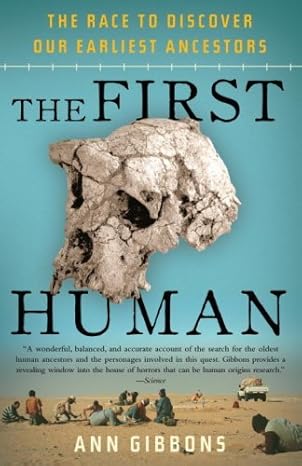
The First Human: the Race to Discover our Earliest Ancestors
In this dynamic account, award-winning science writer Ann Gibbons chronicles an extraordinary quest to answer the most primal of questions: When and where was the dawn of humankind?Following four intensely competitive international teams of scientists in a heated race to find the “missing link”–the fossil of the earliest human ancestor–Gibbons ventures to Africa, where she encounters a fascinating array of fossil hunters: Tim White, the irreverent Californian who discovered the partial skeleton of a primate that lived 4.4 million years ago in Ethiopia; French paleontologist Michel Brunet, who uncovers a skull in Chad that could date the beginnings of humankind to seven million years ago; and two other groups–one led by zoologist Meave Leakey, the other by British geologist Martin Pickford and his French paleontologist partner, Brigitte Senut–who enter the race with landmark discoveries of their own. Through scrupulous research and vivid first-person reporting, The First Human reveals the perils and the promises of fossil hunting on a grand competitive scale.
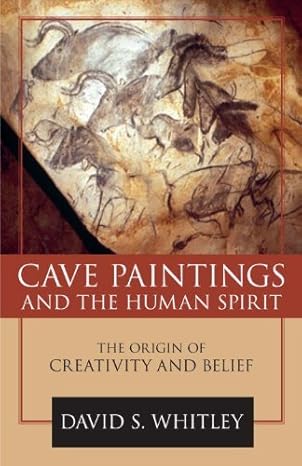
Cave Paintings and the Human Spirit: The Origin of Creativity and Belief
The magnificent prehistoric art discovered in caves throughout France and Spain raises many questions about early human culture. What do these superbly rendered paintings of horses, bison, and enigmatic human figures and symbols mean? How can we explain the sudden flourishing of artistic creativity at such a high level? And in what ways does this artwork reflect the underlying belief system, worldview, and life of the people who created it?In this fascinating discussion of ancient art and religion, Dr. David S. Whitley―one of the world's leading experts on cave paintings―guides the reader in an exploration of these intriguing questions, while sharing his firsthand experiences in visiting these exquisite, breathtaking sites.To grasp what drove these ancient artists to create these masterpieces, and to understand the origin of myth and religion, as Whitley explains, is to appreciate what makes us human. Moreover, he broadens our understanding of the genesis of creativity and myth by proposing a radically new and original theory that weds two seemingly warring camps from separate disciplines.On the one hand, archaeologists specializing in prehistoric cave paintings have argued that the visionary rituals of shamans led to the creation of this expressive art. They consider shamanism to be the earliest known form of religion. By contrast, evolutionary psychologists view the emergence of religious beliefs as a normal expression of the human mind. In their eyes, the wild and ecstatic trances of shamans were a form of aberrant behavior. Far from being typical representatives of ancient religion, shamans were exceptions to the normal rule of early religion.Whitley resolves the controversy by interweaving the archaeological evidence with the latest findings of cutting-edge neuroscience. He thereby rewrites our understanding of shamanism and its connection with artistic creativity, myth, and religion.Combining a colorful narrative describing Whitley's personal explorations at key archaeological sites with robust scientific research, Cave Paintings and the Human Spirit makes for engrossing reading. It provides a profound and poignant perspective on what it means to be human.
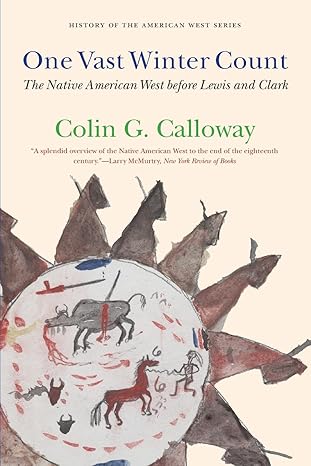
One Vast Winter Count: The Native American West before Lewis and Clark
This magnificent, sweeping work traces the histories of the Native peoples of the American West from their arrival thousands of years ago to the early years of the nineteenth century. Emphasizing conflict and change, One Vast Winter Count offers a new look at the early history of the region by blending ethnohistory, colonial history, and frontier history. Drawing on a wide range of oral and archival sources from across the West, Colin G. Calloway offers an unparalleled glimpse at the lives of generations of Native peoples in a western land soon to be overrun.
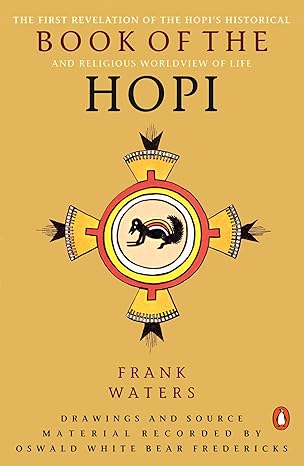
Book of the Hopi
In this strange and wonderful book, thirty elders of the ancient Hopi tribe of Northern Arizona—a people who regard themselves as the first inhabitants of America—freely reveal the Hopi worldview for the first time in written form. The Hopi kept this view a secret for countless centuries, and anthropologists have long struggled to understand it. Now they record their myths and legends, and the meaning of their religious rituals and ceremonies as a gift to future generations. Here is a reassertion of a rhythm of life we have disastrously tried to ignore and instincts we have tragically repressed, and a reminder that we must attune ourselves to the need for inner change if we are to avert a cataclysmic rupture between our minds and hearts.

Pumpkin Seed Point: Being Within the Hopi
Frank Waters lived for three years among the Hopi people of Arizona and was quickly drawn into their culture. Pumpkin Seed Point is a beautifully written personal account of Waters’s inner and outer experiences among the Hopi.
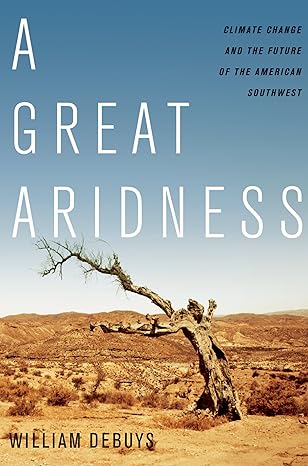
A Great Aridness- Climate Change and the Future of the American Southwest
With its soaring azure sky and stark landscapes, the American Southwest is one of the most hauntingly beautiful regions on earth. Yet staggering population growth, combined with the intensifying effects of climate change, is driving the oasis-based society close to the brink of a Dust-Bowl-scale catastrophe. In A Great Aridness, William deBuys paints a compelling picture of what the Southwest might look like when the heat turns up and the water runs out. This semi-arid land, vulnerable to water shortages, rising temperatures, wildfires, and a host of other environmental challenges, is poised to bear the heaviest consequences of global environmental change in the United States. Examining interrelated factors such as vanishing wildlife, forest die backs, and the over-allocation of the already stressed Colorado River--upon which nearly 30 million people depend--the author narrates the landscape's history--and future. He tells the inspiring stories of the climatologists and others who are helping untangle the complex, interlocking causes and effects of global warming. And while the fate of this region may seem at first blush to be of merely local interest, what happens in the Southwest, deBuys suggests, will provide a glimpse of what other mid-latitude arid lands worldwide--the Mediterranean Basin, southern Africa, and the Middle East--will experience in the coming years. Written with an elegance that recalls the prose of John McPhee and Wallace Stegner, A Great Aridness offers an unflinching look at the dramatic effects of climate change occurring right now in our own backyard.
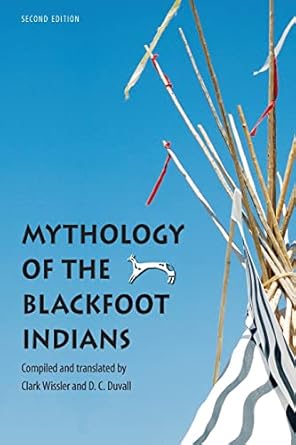
Mythology of the Blackfoot Indians
Mythology of the Blackfoot Indians, originally published in 1908 by the American Museum of Natural History, introduces such figures as Old Man, Scar-Face, Blood-Clot, and the Seven Brothers. Included are tales with ritualistic origins emphasizing the prototypical Beaver-Medicine and the roles played by Elk-Woman and Otter-Woman, as well as a presentation of Star Myths, which reveal the astronomical knowledge of the Blackfoot Indians. Narratives about Raven, Grasshopper, and Whirlwind-Boy account for conditions in humanity and nature. Many of the stories in the concluding group, such as “The Lost Children” and “The Ghost-Woman,” were tales told to Blackfoot children. These narratives were collected early in the twentieth century from the Piegans in Montana and from the North Piegans, the Bloods, and the Northern Blackfoot in Canada. Most were translated by D. C. Duvall and revised for Mythology of the Blackfoot Indians by Clark Wissler. Darrell Kipp provides an introduction to the new Bison Books edition.
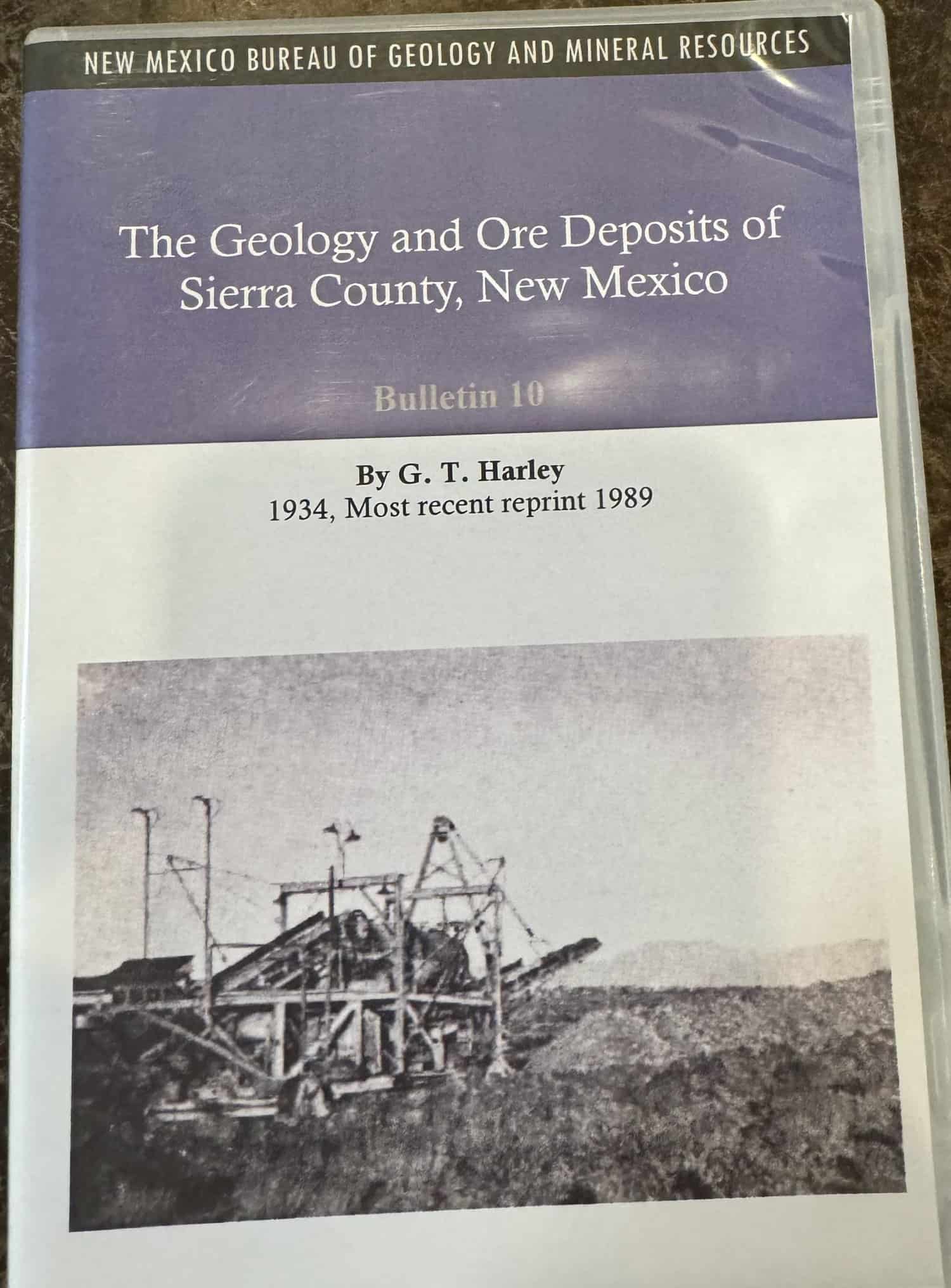
DVD: The geology and ore deposits of Sierra County, New Mexico
Discusses geology and metallic resources of Sierra County, third largest producer of mineral wealth in New Mexico. Sierra County, one of the smaller counties of NM, has been its third largest producer of mineral wealth. All of the ore bodies so far exploited have been of small to moderate size, although some of them have been phenomenally rich. To those who are interested in seeking out and operating small mining properties, the potential mineral wealth of this area is still a matter of great interest. The field work for this report was begun July 1, 1931. During July and August a general survey was made of the county, and most of the mining districts were examined in such detail as time and the condition of the mines permitted. A topographic map of the Hillsboro district was made and the areal geology worked out. It was planned to complete the preparation of the report during the winter months and to have it ready for the printer in the summer of 1932. In the meantime, however, due to depressed conditions in the metal market, many of the larger base-metal mines in the southwestern US greatly curtailed production or suspended operations completely. This encouraged many individuals and small operating units to take up in an energetic manner the search for placer and lode gold deposits, or to attempt to find base-metal deposits containing gold in sufficient quantity to make operation profitable in spite of existing low prices. The result was that many of the mines in the county that were inaccessible in 1931 had been or were being sampled or prepared for operating in the spring of 1932. It was necessary, therefore, during July 1932, and on several occasions thereafter, to revisit the different mining camps in the county and to include much additional material with that already gathered. This bulletin has been prepared primarily for the use and information of prospectors, owners and operators of mining property in Sierra County, and as a guide to those non-residents of the county who are seeking an outlet for funds through the development of the metallic resources of the region. To this end technical phraseology and the presentation of the highly scientific aspects of the geology of the county have been minimized, and the evidence gathered in the field, as shown by surface outcrops and the portions of veins exposed underground, has been emphasized. Throughout Sierra County, most of the small properties and many of the larger ones have been inactive for many years, and their workings have caved and have become inaccessible. Many of the owners, as well as others who were once familiar with these old workings, are no longer in the county, and the claims have declined until claim and location monuments, and the notices that were once in them, can no longer be found in the field. Where old records of production are still available or reports by reputable engineers have been read, it has been possible in a measure to picture the conditions that existed in the veins when these old mines were active, but on the whole, the details of production and the value of the ore shipped have become clouded and in many instances are quite out of line with the evidence obtainable at surface. It is not contemplated by the state Bureau of Mines that much actual sampling of the veins shall be done by the geologist investigating ore deposits in the state for Bureau publications, and he is constrained to gather the figures as to the value of the ore from whatever source is available, and to use proper judgement in utilizing them. In those camps now active, most of the smaller holdings have operated in the past two or three years under a whole series of new claim and company names, and the original and often historical names have been lost completely. Only the more important properties, as the Rattlesnake, Bonanza, Lady Franklin, Silver Monument, US Treasury, and several others, have held to their original names. The report has been prepared very largely on the evidence found on surface, secured without regard for property lines, and supplemented by the study of practically all of the openings accessible to the writer during his several visits to the county. The first part of the report includes a description of the rocks and the geological history of the county, a discussion of the ore bodies and their mineralogy, and a brief review of practical points involved in the search for ore and the economical exploitation of this mineral wealth. The second part is given to a detailed description of the vein systems and other modes of occurrence of the ore in each of the mining districts within the county, and to the descriptions of most of the mines that were open at the time of visit, and which contributed something to the store of knowledge regarding these veins. While the material of this bulletin may be regarded as a basis on which to locate and plan future work in the ore deposits of the region, such work should not be prosecuted over long periods of time except under sound technical direction. In the long run it is always the most economical procedure to secure the services of an experienced and reputable mining engineer or mining geologist at frequent and stated intervals, and to rely upon his judgement and advice regarding the future possibilities of the mine, the quantity, and value of the ore blocked out, the best campaign for future development, and the advisability of expenditures for plant and equipment.
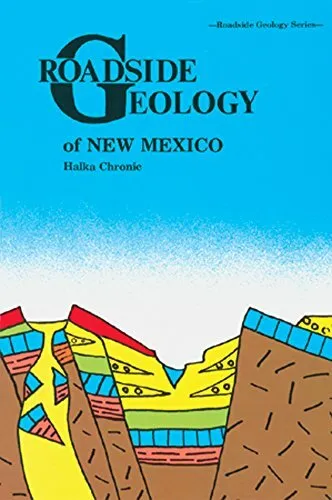
Roadside Geology of New Mexico
The Land of Enchantment, New Mexico is as varied in its scenery as its nickname suggests. With desert lowlands in the south and high, hoary peaks in the north, with rugged volcanic uplands and colorful plateaus, with high plains along its eastern border
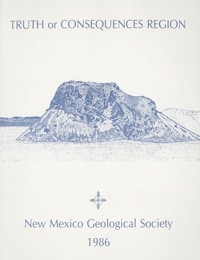
New Mexico Geological Society Fall Field Conference Guidebook – 37 Truth or Consequences Region
The first-day road log is from Truth or Consequences to Sierra Cuchillo, Winston, South Fork Cuchillo Negro Creek, Fluorine, and Central Black Range. This tour will visit the volcanic areas northwest of Truth or Consequences in the Sierra Cuchillo, Winston graben, and Black Range. The tour will emphasize: Miocene to Pleistocene stratigraphy and sedimentology of the Palomas Formation, stratigraphy of the Rubio Peak Formation including spectacular exotic bloacks of Pennyslvanian limestone, Ag, Au, Cu fissure-vein mineralization of the Chloride mining district, and pyroclasitc volcanism and tin mineralization associated with the Taylor Creek Rhyolite. The second-day road log is from Truth or Consequences to Fra Cristobal Range via Elephant Butte Dam, Northern Caballo Mountains, Cutter Sag, and Jornada del Muerto. The trip describes the Tertiary and Quaternary Palomas Formation, Quaternary terrace deposits, Cretaceous and early Tertiary stratigraphy, and Pliocene basalts. Access to the Fra Cristobal Range was available by special arrangement for the conference. Individuals and groups may not return for subsequent tours without permission from the landowners. The third-day road log is from Truth or Consequences to southeastern Caballo Mountains and San Diego Mountain via I-25 and the Jornada del Muerto. This day's tour will focus on Laramide tectonics in the southern Caballo Mountains and the Tonuco uplift (San Diego Mountain).
